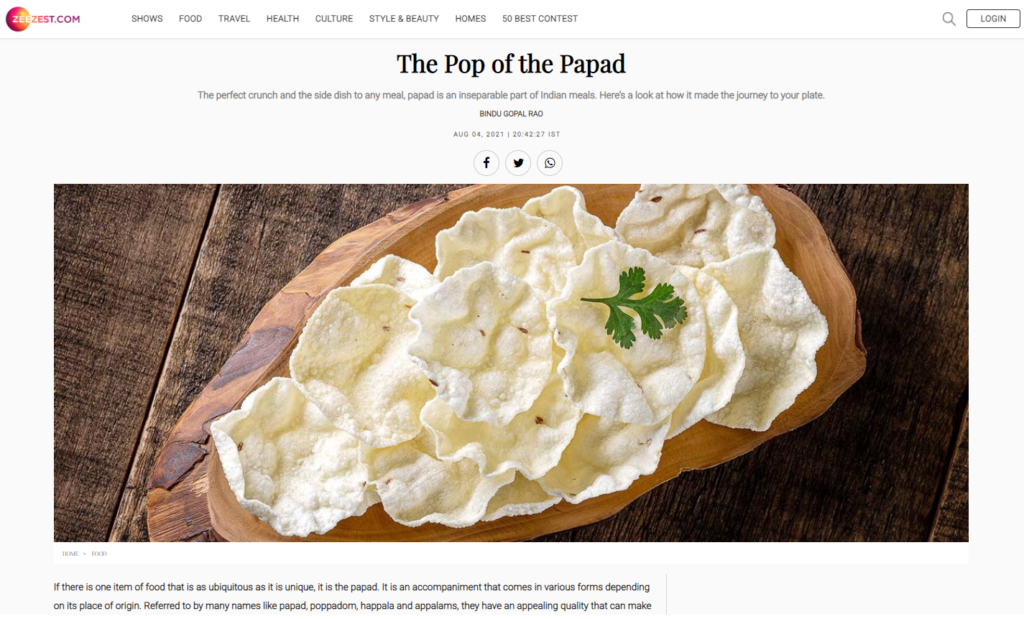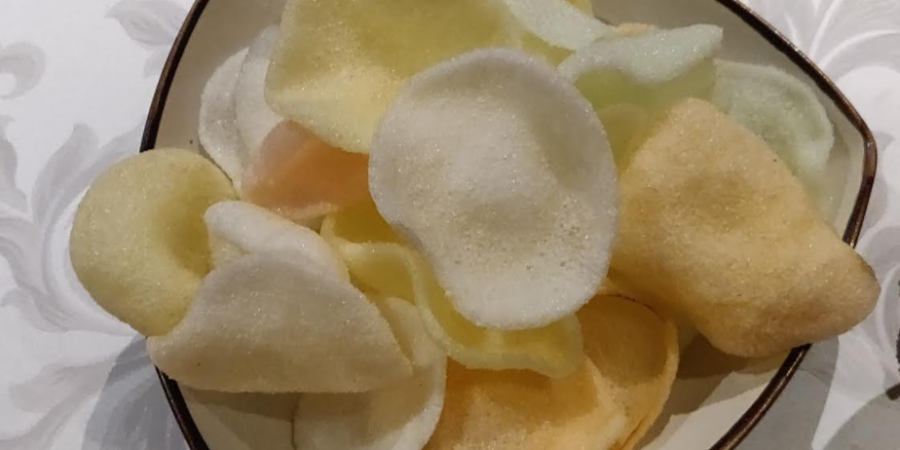The quintessential accompaniment to any meal, papads are omnipresent in plates across India in different forms.
From historical records, papads on the subcontinent are at least 1,500 years old, if not more. There are pockets of India which are very hot – the Thar dessert, Khandesh, most of the dusty north-western plains and large tracts of rain-shadow areas in the Deccan Plateau, all this Sun has been harnessed for centuries by the Indian Kitchen – to pickle and to preserve, and the Papad or Par-pata has emerged from this practice. It is not a coincidence that the first mention of Papads is in Jain literature.
“I found this connection when I was shooting Lost Recipes in Shekhwati last year, which is a stronghold of the Marwari Jain trader community – one of the recipes that are dying out there is Phaphalia – simply sundried vegetables – the community would dry vegetables when available and stow them away in big dabbas – these vegetables were rehydrated and cooked in the arid months or cold winters where not much else was available to eat. They would carry these dried vegetables with them on travels and cook them – these would travel well when they went long distances for trade,” says Shubhra Chatterji, Culinary Researcher & Founder, Historywali.

Papads would have been part of the travelling kitchen too. Jains also have restrictions on their food and eating in the rains, at this time of Paryushan – they do not eat green leafy greens (as bugs and worms and ‘keede’ live on them in the rains’, and fruits so the diet is largely restricted to grains and lentils – and papads fit right in, papad ki sabzi for example. It is at this time too that Phaphali that I mentioned are made into sabzi.
A second Papad connect, or the second wave of Papad really is a direct result of the Sindhi migration out of their homeland in 1947, a forced migration that left them with no land and only a smattering of possessions. Women would make Papads and Pickles to sell to make a little money. They turned to the only skill they knew – cooking. Some say that they survived on Papads on their long journey from Sindh to pockets of India – but I feel this is just a romanticisation of the connection.
And the third most important mention when one speaks of Papad is the women’s collective movement and Lijjat Papad on which you’ll find a lot written everywhere – the seven women in Girgaum and how they started the collective.
Read the full story that first appeared on Zee Zest here:

